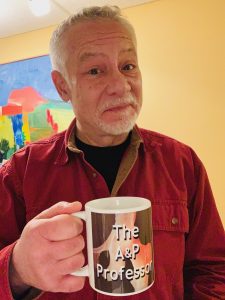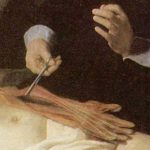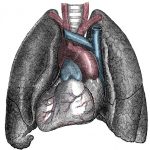Jul 29, 2019
Host Kevin Patton presents a remix of classic segments from the TAPP Radio archive, all related to the role of human remains in teaching and learning anatomy. Features two conversations with Aaron Fried.
01:00 | Introduction to the Special Episode
04:35 | Sponsored by HAPS
04:57 | The Silent Teacher | Aaron Fried
30:07 | Sponsored by AAA
30:25 | Situs Inversus
46:32 | Sponsored by HAPI Online Graduate
Program
46:59 | Book Club x 3
56:26 | Podcast Award Nomination
57:20 | The Nazi Anatomists | Aaron Fried
If you cannot see or activate the audio player click here.
Questions & Feedback: 1-833-LION-DEN
(1-833-546-6336)
Follow The A&P Professor on Twitter, Facebook,
Blogger,
Nuzzel,
Tumblr, or
Instagram!
The way I see it, being dead is not terribly far off from being on a cruise ship. Most of your time is spent lying on your back. The brain has shut down. The flesh begins to soften. Nothing much new happens, and nothing is expected of you. (Mary Roach)
1 | Introduction to the Special Episode
3.5 minutes
This is the second of a series of special episodes in which classic segments from past episodes that all reflect a similar theme are brought together for further review and reflection.
The general topic of this special episode revolves a recurring theme of this podcast:
using human remains (and reproductions) in teaching anatomy
Get your own hip mug for A&P professors! my-ap.us/2lnFsGd
2 | Sponsored by HAPS
0.5 minutes
The Human Anatomy & Physiology Society (HAPS) is a sponsor of this podcast. You can help appreciate their support by clicking the link below and checking out the many resources and benefits found there.
3 | The Silent Teacher—A Conversation with Aaron Fried
25 minutes
Aaron Fried, A&P faculty at Mohawk Valley Community College and national speaker on human body donation and anatomists in Nazi Germany, joins Kevin for a lively discussion of the value of "the silent teacher"—the human body donor—in teaching human structure. This chat touches on the value of respect and appreciation of human donors, proper implementation of human remains such as skeletons in A&P courses, and how that respect should extend to reproductions of human specimens.
This is the first of two conversations with Aaron Fried. The next episode (Episode 30) will delve more deeply into the anatomy illustrations produced by anatomists in Nazi Germany and the many ethical questions surrounding their continued use in anatomy labs around the world.
- https://www.mvccanatomy.org/ (Aaron Fried's website)
- professoranatomeme (Aaron Fried's Instagram)
- History & Culture Mini Lesson (part of Kevin's course outline that explores issues of using human bodies in anatomy)
4 | Sponsored by AAA
0.5 minute
The searchable transcript for this episode, as well as the captioned audiogram of this episode, are sponsored by The American Association of Anatomists (AAA) at anatomy.org.
5 | Situs Inversus
16 minutes
Situs inversus is a mirrorlike flipping of visceral organs that occurs in embryonic development. Also called situs transversus or situs oppositus. Normal siting of organs is called situs solitus.
- Situs inversus and my 'through the looking glass' body (recent article by someone living with situs inversus) my-ap.us/2WatPzP
- Body donor's rare anatomy offers valuable lessons (press release on recent 99-year old donor with situs inversus with levocardia) my-ap.us/2Wf5MzO
- Heart Transplantation in Situs Inversus Maintaining Dextrocardia (interesting study of transplanting 'normal' hearts into patients with dextrocardia) my-ap.us/2WmbTlL
6 | Sponsored by HAPI Online Graduate Program
0.5 minute
The Master of Science in Human Anatomy & Physiology Instruction—the MS-HAPI—is graduate program for A&P teachers. A combination of science courses (enough to qualify you to teach at the college level) and courses in instructional practice, this program helps you power up your teaching. Kevin Patton is a faculty member in this program. A new cohort starting in the fall trimester is starting now, so check it out!
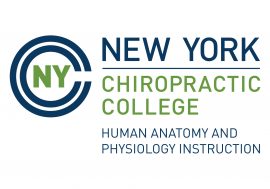
7 | Book Club (x3)
9.5 minutes
Kevin revisits several book recommendations from the TAPP Book Club —all related to this episode's theme.
- The Anatomist
- by Bill Hayes
- Book about Henry Gray and illustrator Henry Vandyke Carter)
- amzn.to/2jMwlOR
- The Silent Teacher: The Gift of Body Donation
- by Dr. Claire Smith
- Book about body donation in anatomical education
- amzn.to/2Gfbxap
- Stiff: The Curious Lives of Human Cadavers
- by Mary Roach
- amzn.to/2Ys2s51
- Ten Things We Use When Embalming (blog post by a funeral director, shows the little discs with hooks that keep eyelids closed) my-ap.us/2Eak1ic

8 | Podcast Award Nomination
1 minute
The A&P Professor podcast needs additional nominations to get to the next round of The People's Choice Podcast Awards. Lot more. Will you please take a moment to nominate this podcast? And ask your friends and relatives, even strangers, to also nominate us?
These must be completed by the end of July!

9 | The Nazi Anatomists—A Conversation with Aaron Fried
21 minutes
Aaron Fried, A&P faculty at Mohawk Valley Community College and national speaker on human body donation and anatomists in Nazi Germany, joins Kevin for a lively discussion of the value of "the silent teacher"—the human body donor—in teaching human structure. In this second of two chats, Aaron discusses illustrations produced using executed prisoners in Nazi Germany and what this means for today's A&P teacher.
- Episode 29 (our first conversation, which which touched on the ethics of using human body donors)
- Who Was Eduard Pernkopf? (Aaron Fried's video explains some of the history around Eduard Pernkopf and defines the Pernkopf controversy.)
- https://www.mvccanatomy.org/ (Aaron Fried's website)
- professoranatomeme (Aaron Fried's Instagram)
- The Immortal Life of Henrietta Lacks (The A&P Professor Book Club selection by Rebecca Skloot; mentioned by Aaron Fried)
- History & Culture Mini Lesson (part of Kevin's course outline that explores issues of using human bodies in anatomy)
- Anatomy and Ethical Transgressions in National Socialism (video of a talk given by Sabine Hildebrandt at Harvard)
- Dr. Sabine Hildebrandt: Episode #67 (interview from the Anatomy Education Podcast) my-ap.us/2lkJxej
- Researchers Issue Guidelines on Handling Holocaust Remains (video with text summary; includes application of "Vienna protocols" to anatomical art, as mentioned by Aaron Fried)
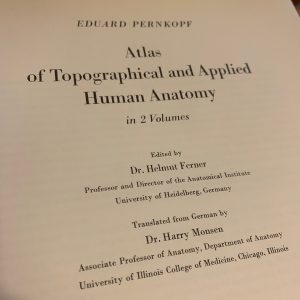
If the hyperlinks here are not active, go to TAPPradio.org to find the episode page.
- More details at the episode page.
- Transcript available at the script page.
- Listen to any episode on your Alexa device.
- Need help accessing resources locked behind a paywall? Check out this advice from Episode 32 to get what you need! https://youtu.be/JU_l76JGwVw?t=440





